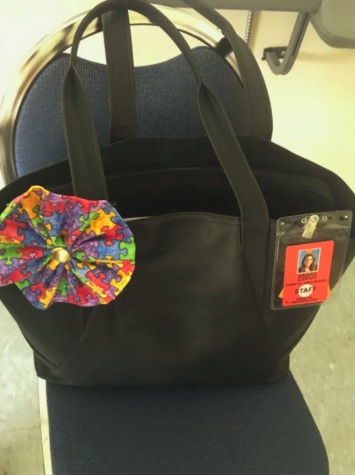Perspective of Teachers/Aides: What is it like working with kids who have Autism?
April 16, 2018
If you aren’t one of the students on an Individualized Education Plan (IEP) at East, you likely don’t know about the programs set in place for students with special needs. But for those whose job it is to educate and guide those people, special education is their world.
In honor of Autism Awareness Month, Eastside spoke with teachers and aides throughout the school to get a closer look into what role they play in helping give the best possible education for those with special needs that walk through East’s doors.
One of those teachers is Sarah Cervo, a special education English teacher who has been at East for six years. She spends her days in an inclusion classroom, working alongside a general education teacher to create the best possible learning experience for students of all need levels. These teachers tailor their lessons to accommodate the needs of every teen within their reach.
But how does the IEP process work in the first place?
Typically, the process begins in elementary school. If a teacher suspects that a student may have some sort of learning disability, they speak with the parent and the child undergoes a series of tests. A child study team, consisting of an education assistant, special education teacher, psychologist, guidance counselor and the child’s parents, evaluates each child.
“Based on this evidence, a student is diagnosed with a learning disability or classified under a certain category of learning,” Cervo said.
At the beginning of each school year, there is an IEP meeting, where the plan for each individual student is evaluated, and changes are made if deemed necessary. Some of these students are then taught in specialized education classrooms like the one Cervo teaches in.
Teachers aren’t the only piece of the special needs support network at East. Christine Cox and Ann Tirocke are two of the many education assistants who offer both educational and emotional support.
Cox, who said she struggled in high school, decided to come to East so she can make a difference in the lives of high schoolers today, so they don’t have to suffer in the way that she did.
For Tirocke, her relation to East was slightly different.
“Coming to East was like coming home,” said the Cherry Hill West graduate, who has been working at East since 2006.
A lot has changed throughout the decades in supporting special needs students.When Cox and Tirocke were younger, special needs students were often sent to individualized classrooms. But this method isolates children from their peers, which stagnates development and can lead to social ostracization. Now, their job entails following their students from classroom to classroom to offer academic as well as emotional support. When a teacher explains a lesson in a way that a student does not understand, it’s up to Cox and Tirocke to reiterate the lesson in a way that is comprehensible to their students. They work with kids that range from having learning disabilities such as attention-deficit/hyperactivity disorder (ADHD) or dyslexia to low and high functioning Autism.
In accordance with Autism Awareness Month, these members of the East community advocate for kindness for those who see the world through a unique lens.
“Many people do not know what these students are up against…these kids need to be treated with compassion just like anybody else,” said Cox.
This April, remember that the differences in those who have special needs should be celebrated and understood, not discriminated against.

